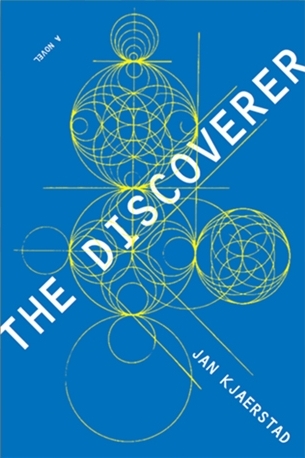In The Discoverer, the third leg of Jan Kjærstad’s Wergeland Trilogy, celebrity Jonas Wergeland sails along Norway’s fjords and ponders. Famous for the TV series Thinking Big and infamous for the murder of his wife, Magrete, Jonas begins to rewrite his memoir, having destroyed draft one in prison. “Why did he do it?” is the query that frames this tale.
The Discoverer follows The Seducer and The Conqueror, which present Jonas’s story from different perspectives. Each can be read alone, but Kjærstad is tricky. The narrator in book one is revealed in book two; the identity of a “mysterious figure” in two is revealed in three. To find out requires a lengthy commute and stellar vision. The trilogy comprises 1,597 pages; the second and third installments appear to be in nine-point font.
Book three is set aboard the Voyager, “like Noah’s Ark for our technological society,” where Jonas is accompanied by the OAK Quartet (Oslo Art Kitchen), his daughter Kristin among them. Commissioned to “map” Norway’s cultural highlights, the young crew brainstorms and creates multimedia. “What should we take with us?” is reiterated throughout. “They keep branching off into stories,” Jonas observes. “Maybe it’s the boat that inspires them… sitting in the glow of an old paraffin lamp.”
Jonas has a talent for intellectual webbing, evident in the arty splicing of his TV series and in his lifelong ability to juggle several thoughts at once. (He later becomes a literal juggler.) “If he was to be a discoverer, he would have to be the type who made discoveries with the mind, not with the eyes.” Irritated by the nonsensical Dewey decimal system, Jonas outlines his ambitious Project X, a new way to categorize items and ideas. Search engines would seem to be the answer, but the connections Jonas mines are more esoteric. How did he meet and re-meet Magrete? How did he lose her, exactly?
For answers, Kjærstad takes us back to Jonas’s childhood, fast-forwards to adulthood, and repeats. Narrative threads are broken to rehash detailed memories of omelettes, organists, triplets, and chandelier crystals. Flashbacks are piled on, and transitions are often explicit:“And speaking of unopened doors”; “Behind all this there was, of course, a story.” “A few thoughts on modern Norway” are interspersed.
This intentional, labyrinthine clumsiness could be annoying, but Kjærstad also turns out to be adept at branching.The omelettes do...
You have reached your article limit
Sign up for a digital subscription and continue reading all new issues, plus our entire archives, for just $1.50/month.
Already a subscriber? Sign in





